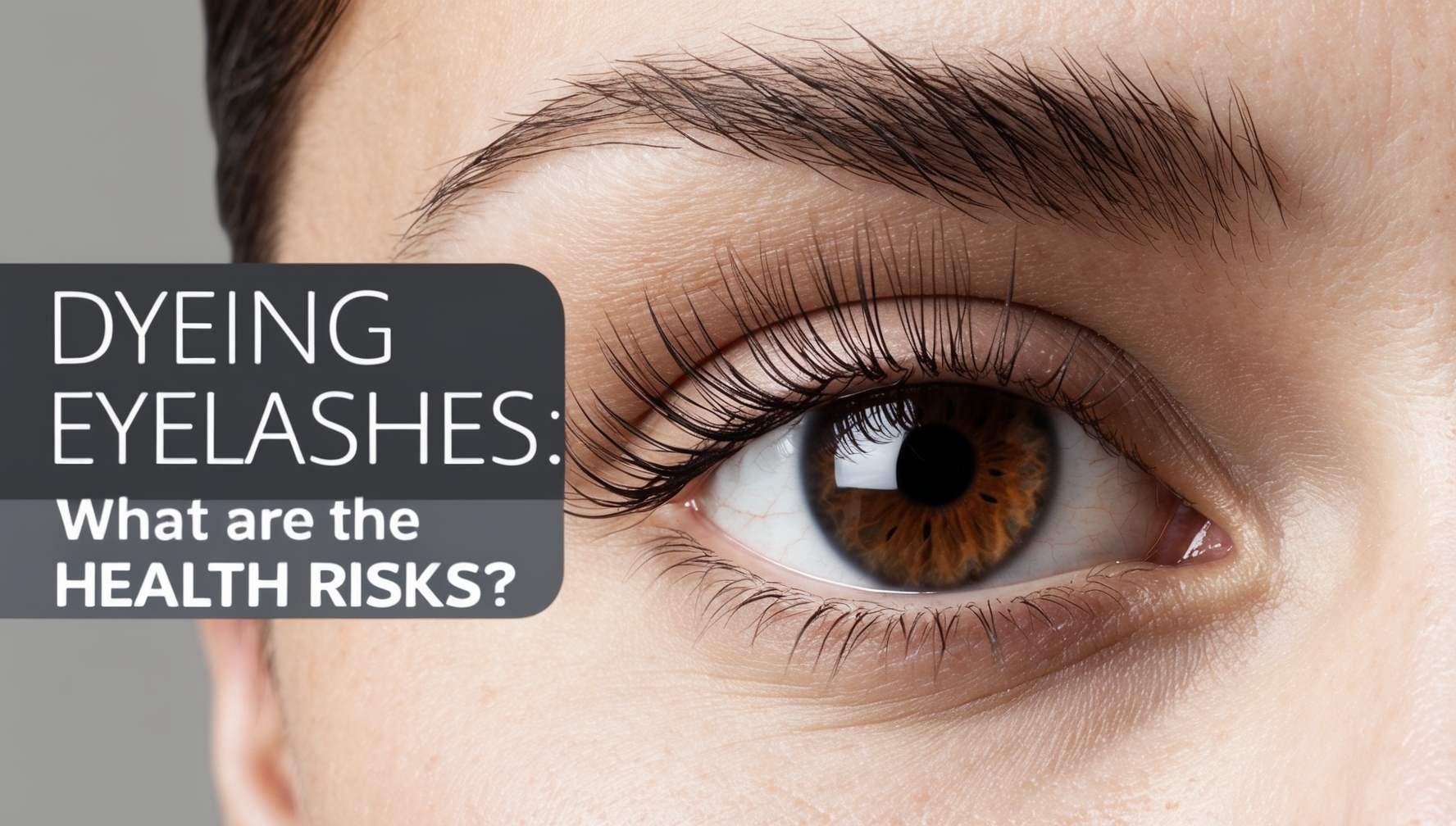Dyeing eyelashes has gained popularity as a convenient way to achieve a fuller, darker lash look without relying on mascara. But before you consider it, what are the health risks associated with this beauty treatment?
Understanding the Process of Eyelash Dyeing
Eyelash dyeing involves applying a semi-permanent color to the lashes, typically using a vegetable-based dye. This process is often performed by a professional in a salon setting, though DIY kits are also available. The appeal of eyelash dyeing lies in its promise of enhanced lashes without daily makeup application. However, this convenience may come with some health risks that are worth considering.
Potential Allergic Reactions
One of the most common risks associated with eyelash dyeing is an allergic reaction. The skin around the eyes is particularly sensitive, and the ingredients in eyelash dyes can cause redness, itching, swelling, or more severe reactions like hives or even difficulty breathing. If you have a history of allergies or sensitive skin, you may be more prone to experiencing an adverse reaction.
Key allergens in eyelash dye:
- Paraphenylenediamine (PPD): Often found in hair and eyelash dyes, PPD is a common cause of allergic reactions.
- Fragrances and preservatives: Added to enhance the product’s shelf life and scent, these can also trigger allergies.
Risk of Eye Irritation and Damage
Eyelash dyeing products contain chemicals that can easily irritate the eyes if they come into direct contact. Even when applied by a professional, there’s a chance that the dye could inadvertently touch the eye’s surface, leading to irritation, redness, and watery eyes. In severe cases, this exposure could result in chemical burns or even damage to the cornea.
Symptoms of eye irritation include:
- Burning sensation
- Watery eyes
- Redness
- Blurred vision
Infections and Contamination
The eyes are incredibly vulnerable to infections, and the process of dyeing eyelashes can increase this risk. If the tools or products used aren’t properly sanitized, there’s a chance of introducing bacteria or fungi into the eye area, leading to conditions like conjunctivitis (pink eye) or even more serious infections.
Preventative measures:
- Ensure the salon follows strict hygiene protocols.
- Avoid DIY kits that may not guarantee sterile conditions.
The Danger of Improper Application
When eyelash dyeing is performed incorrectly, it can lead to several problems. For instance, applying the dye too close to the lash line can cause it to seep into the eyes. Additionally, using a dye that is too strong can result in over-processing, leading to brittle, weak lashes that may break or fall out prematurely.
Signs of over-processing:
- Brittle lashes
- Thinning lashes
- Increased lash fallout
Potential Long-Term Effects
Regular use of eyelash dye may also contribute to long-term health risks. Continuous exposure to the chemicals in these dyes could potentially weaken the lashes, making them more susceptible to breakage over time. Furthermore, frequent dyeing might lead to chronic irritation or sensitization, where the skin around the eyes becomes increasingly reactive to even minimal exposure.
Considerations for long-term health:
- Limit the frequency of dyeing sessions.
- Use nourishing lash serums to support lash health.
Alternatives to Eyelash Dyeing
Given the potential health risks associated with eyelash dyeing, some may want to explore safer alternatives. These options can provide a similar aesthetic effect without the associated dangers.
Alternatives include:
- Lash extensions: Professionally applied extensions can give the appearance of darker, fuller lashes without the need for dye.
- Tinted mascaras: These offer a temporary solution that washes off at the end of the day, reducing the risk of irritation and allergic reactions.
- Lash lifts with tint: A more gentle option that curls and tints the lashes, though still not without risks, it may be less harsh than full dyeing.
Regulations and Safety Standards
It’s important to note that in some regions, the use of eyelash dyes is regulated or even banned due to the associated health risks. For example, in the United States, the FDA has not approved any color additives for permanent dyeing or tinting of eyelashes or eyebrows. This lack of regulation can make it difficult to ensure the safety and efficacy of the products used.
Key points on regulations:
- FDA stance: No approved color additives for permanent eyelash dyes.
- Salon standards: Vary by region; always choose a reputable provider.
Who Should Avoid Eyelash Dyeing?
While eyelash dyeing can be appealing, it’s not suitable for everyone. Certain individuals should avoid this beauty treatment due to the increased risk of adverse effects.
Groups at higher risk include:
- Those with pre-existing eye conditions: Individuals with conditions like blepharitis or chronic dry eyes are more susceptible to irritation and complications.
- People with sensitive skin: If you frequently experience allergic reactions to beauty products, it’s wise to avoid eyelash dyeing.
- Pregnant or breastfeeding women: The safety of eyelash dyeing during pregnancy or breastfeeding hasn’t been well-studied, so it’s best to err on the side of caution.
Final Thoughts on Eyelash Dyeing
While the allure of waking up with perfectly darkened lashes is tempting, it’s crucial to weigh the potential health risks before deciding to undergo eyelash dyeing. From allergic reactions to the possibility of eye infections and long-term damage, the hazards are real. If you do choose to dye your eyelashes, taking precautions, such as patch testing and selecting a reputable salon, can help mitigate some of these risks. However, always consider whether the temporary beauty enhancement is worth the potential impact on your health.
